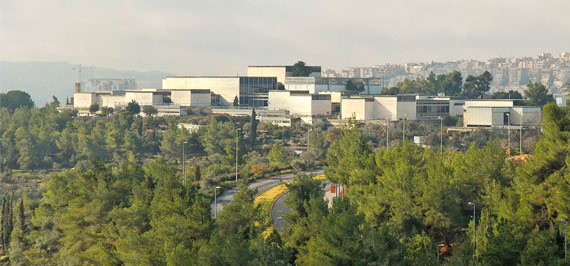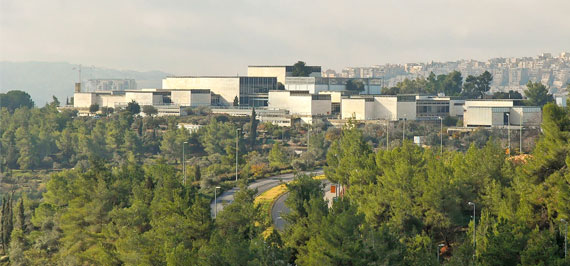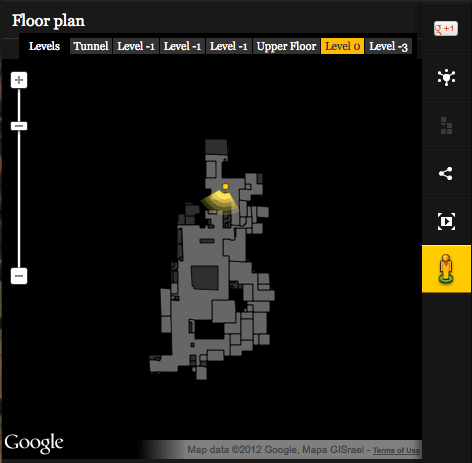
It may sound odd to travel to the land of the Bible and then go indoors to see a museum. But some museums you can only see in Israel.

(Photo: Israel Museum in Jerusalem. Courtesy of the Pictorial Library of Bible Lands)
Even if you aren’t a “museum person,” this one has stuff in it you should see. Lots of stuff. Especially if you have an interest in the Bible.
While I could mention many of objects of note, I’m reducing it down to 7. I’ll also give a link to its virtual museum. (Cool!)
Here are 7 “must-sees” in Jerusalem’s Israel Museum and—more importantly—why you should care.
1. Ketef Hinnom Amulets
These two small silver scrolls have the priestly benediction Numbers 6:24-26 etched on them. They date to the First Temple Period (586 BC) and represent the earliest copy of Scripture we have.
2. Tel Dan Inscription
Archaeologists unearthed fragments of a large, basalt stele that boasted of the Aramean King Hazael’s victory over Israel (2 Kings 8:12-13) and the “House of David.” This represents the only text outside of the Bible that refers to David. This is huge.
3. Sennacherib’s Prism
This clay prism details Sennacherib’s boastful triumph over cities of Judah. The prism mentions the siege on Jerusalem and Hezekiah being made “a prisoner, like a bird in a cage.” Though it fails to mention that the Lord destroyed Sennacherib’s army (2 Chronicles 32:21).
4. Trumpeting Inscription from the Temple Mount
The inscription found in the rubble at the southwest corner of the Temple Mount noted the place where the priest would stand and blow the trumpet to announce the Sabbath and holidays during the Second Temple period.
Google Street View: Look around at the section of finds related to Jesus of Nazareth, including the Caiaphas Ossuary (left), the Pilate Inscription (tallest), and the Heel Bone of a Crucified Man (far right).View Larger Map
5. Heel Bone of Crucified Man
The Romans crucified thousands of people, but this heel bone with a spike still penetrating it represents the only archaeological evidence for the practice.
6. Pilate Inscription
An Italian team discovered this inscription at the Caesarea theater in 1961. The large stone referred to “Pontius Pilate, Prefect of Judaea.” Pilate was the Roman governor who condemned Jesus to death (Matthew 27:22).
7. Caiaphas Ossuary
This ornate ossuary (bone box), discovered in Jerusalem, is that of Joseph Caiaphas, the high priest involved in the trials of Jesus (Matthew 26:57).
It is extremely rare to discover archeological finds relating directly to historical personages. Thus the discovery of two items relating directly to important figures associated with the arrest, trial, and crucifixion of Jesus is truly exceptional (Chronicles of the Land: Archaeology in The Israel Museum Jerusalem, page 120). [The quote refers to the Caiaphas ossuary and the Pilate Inscription.]
Admittedly, I haven’t come close to mentioning all of the key finds in the museum that connect to the Bible, including the Epitaph of King Uzziah and the altar at Tel Beersheba—not to mention the Dead Sea Scrolls! (But that’s in another building.)
Why These Finds Matter to Us
So, why see these seven finds? These bits of wood, metal, stone, and bone may seem like relics of ancient, irrelevant events. But they affirm that the biblical faith of Jews and Christians stems from historical events and not from mythology, mystery, or legend.
- The Jews point to the historical events of Abraham and David as the basis of their claim to the land of Israel and to Jerusalem (Genesis 12:1-2; 2 Samuel 7:16).
- Christians point to the historical events of Jesus’ death, burial, and resurrection at Jerusalem as the basis of their faith (1 Corinthians 15:14).
Without history, faith is absolutely futile—because it isn’t real.
The Bible isn’t a history book, but what it says about history is true. Archaeology supports that history.
That’s a great reason to visit the Israel Museum.
How to Study This Stuff without Having to Go to Israel
Two books can take you a long way in learning:
- The museum’s recent volume, Chronicles of the Land: Archaeology in The Israel Museum Jerusalem, contains many excellent photographs of the artifacts.
- Another excellent volume on key finds and why they matter is Insight’s Archaeological Handbook.
Take a virtual tour of the museum!
- Visit the Israel Museum Art Project, powered by Google.
- To get to the section of the museum about Jesus of Nazareth, stay on Level 0 and click yourself forward through the galleries (do this in the virtual picture, not on the map!) until your position matches the yellow “flashlight” as shown. Be sure and go down the long hallway first. Pretty cool!

(Photo: Image © 2012 Google)
See The Holy Land In Person
Journey to the Bible Lands with Wayne Stiles. You will NEVER be the same! Learn more:
Tell me what you think: What connection do you see (if any) between history and faith? To leave a comment, just click here.
Click here to leave a comment.
-1.png?width=5230&height=1198&name=unnamed%20(4)-1.png)


.jpg?width=350&name=Wayne-books-350wide%20(1).jpg)




